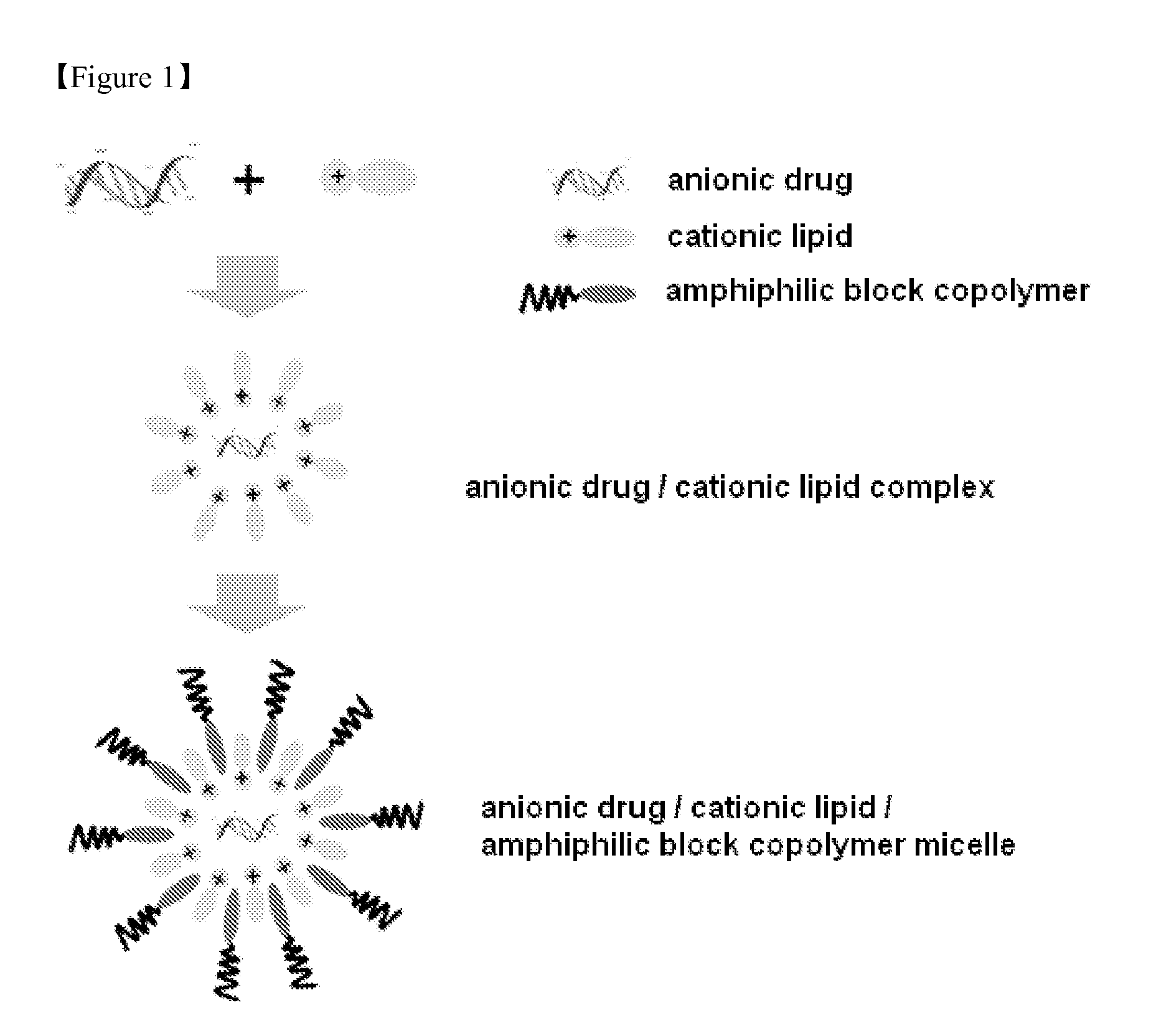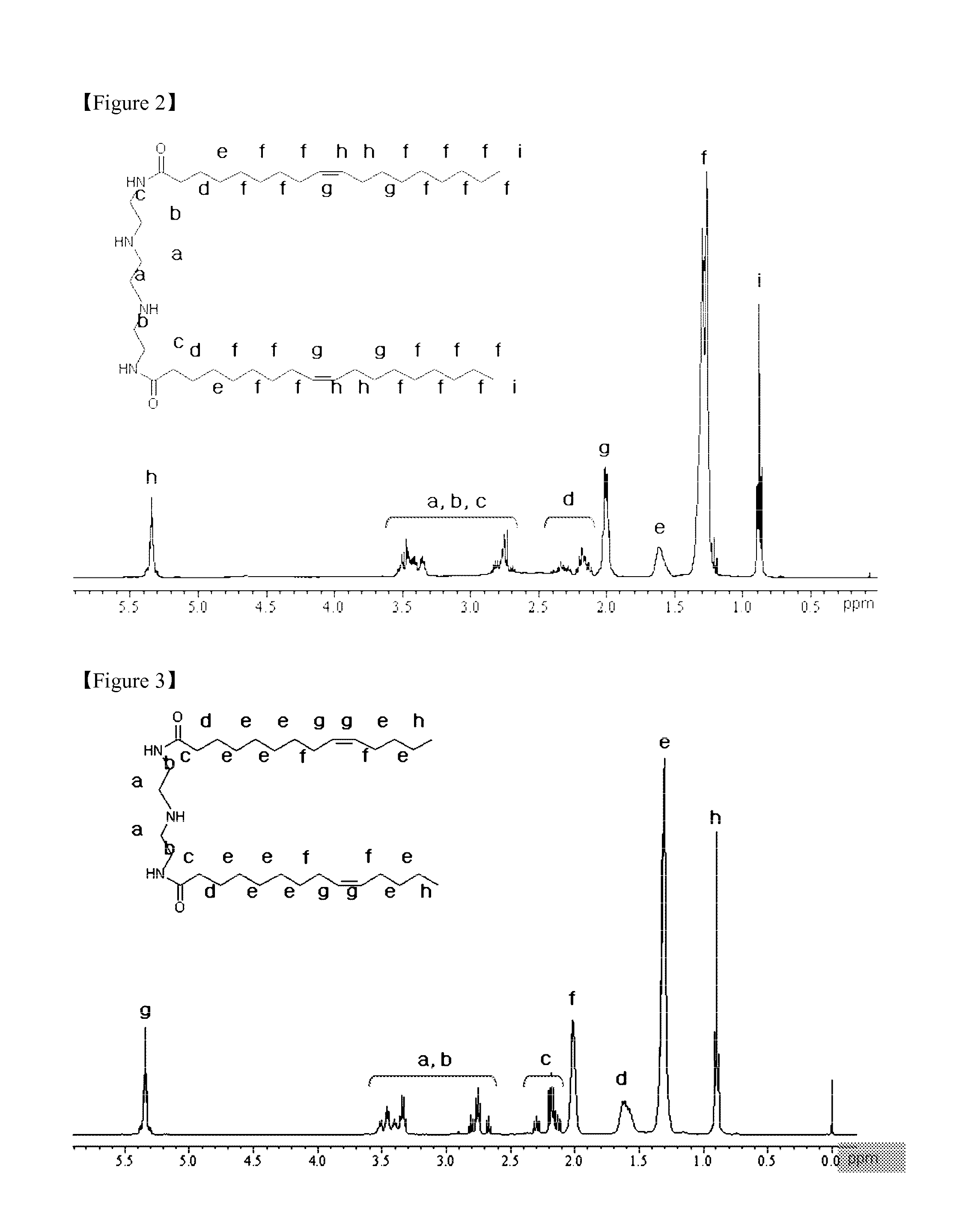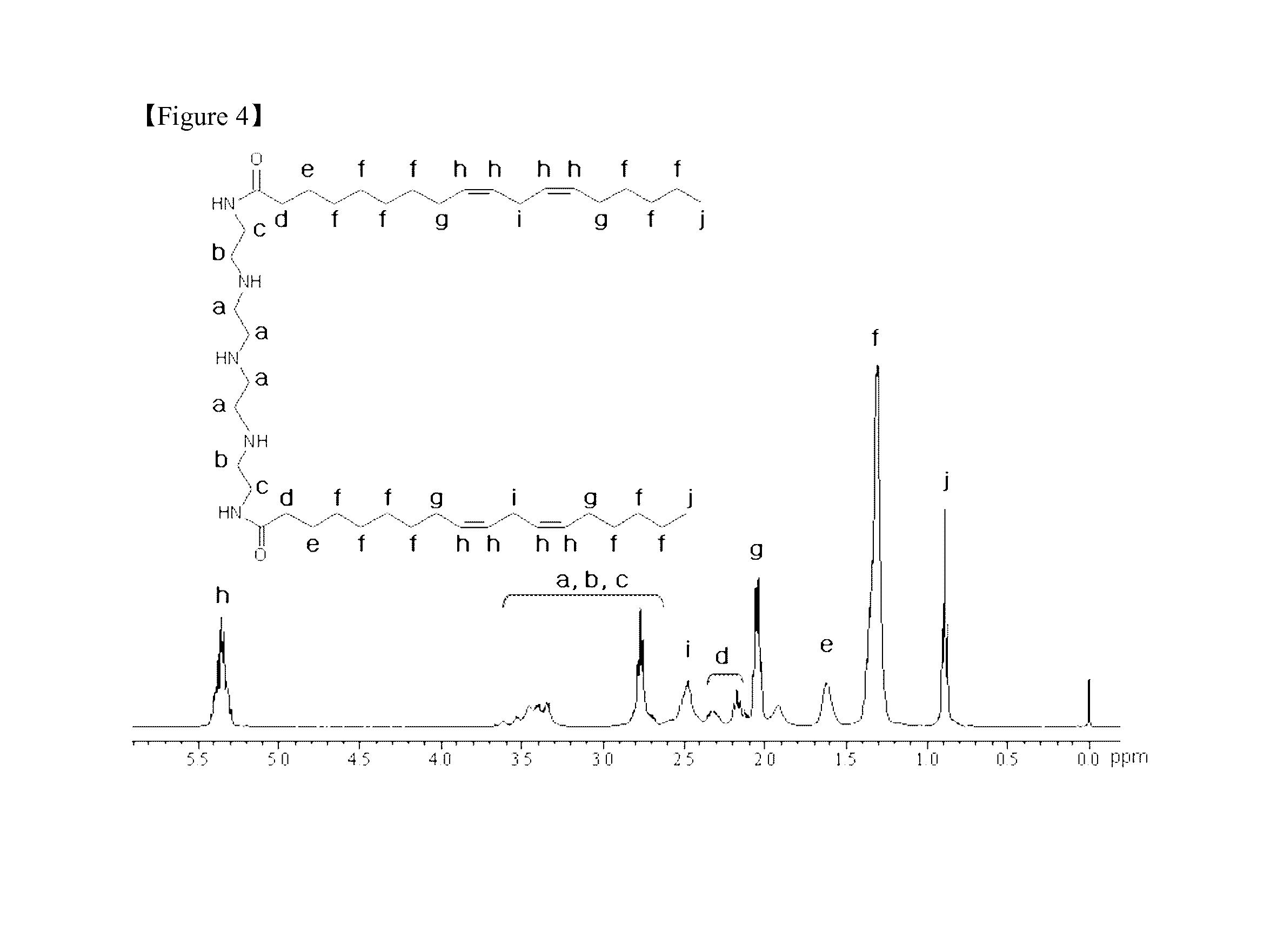Method of Preparing Composition for Delivering an Anionic Drug
a composition and anionic drug technology, applied in the direction of capsule delivery, microcapsules, gene material ingredients, etc., can solve the problems of unsuitable therapeutic applications, serious toxicity, and complex production processes, and achieve the effect of increasing the content of anionic drugs in compositions and increasing the reproducibility of composition preparations
- Summary
- Abstract
- Description
- Claims
- Application Information
AI Technical Summary
Benefits of technology
Problems solved by technology
Method used
Image
Examples
preparation example 1
Synthesis of AC-cholesterol (3β-[N-(aminoethane)carbamoyl]cholesterol)
[0120]For synthesis of AC-cholesterol, cholesteryl chloroformate (Sigma-Aldrich) and ethylenediamine (Sigma-Aldrich) were allowed to react with each other in the following manner.
[0121]1 g (2.23 mmol) of cholesteryl chloroformate was dissolved in 20 ml of chloroform, and in a separate reactor, a 20-fold equivalents of ethylenediamine was diluted with 30 ml of chloroform and kept at 4° C. The cholesteryl chloroformate solution was added slowly to the reactor containing ethylenediamine, and the mixture was allowed to react at room temperature for 3 hours. After completion of the reaction, the solvent was removed using a rotary evaporator (Buchi Labortechnik AG, R-2055), and the remaining material was dissolved in a small amount of chloroform, and then extracted with a saturated NaCl solution and NaCO3 to recover the chloroform layer.
[0122]Then, the solvent was removed using a rotary evaporator, and the remaining mat...
preparation examples 2 to 4
Preparation of 1,6-dioleoyl triethylenetetramide, 1,5-dimyristoleoyl diethylenetriamide and 1,8-dilinoleoyl tetraethylenepentaamide
[0124]1,6-dioleoyl triethylenetetramide was synthesized in the following manner by a nucleophilic addition reaction between triethylenetetramine and oleoyl chloride.
[0125]1.12 g (7.5 mmol) of triethylenetetramine was added to 25 mL of dichloromethane and dissolved with stirring in an ice water bath at 5° C. for 30 minutes. To the solution, a solution of 2.00 g (6.0 mmol) of oleoyl chloride in 20 mL of dichloromethane in a separate reactor was added slowly dropwise while it was allowed to react at 5° C. for 3 hours. Due to hydrogen chloride produced during the reaction, unreacted triethylenetetramine HCl was precipitated. Before the end of the reaction, the upper layer solution was taken and analyzed by thin layer chromatography (TLC) with a mobile phase of ethanol: chloroform (2:1) to determine whether the reaction was completed.
[0126]After it was determ...
preparation example 5
Synthesis of Monomethoxy Poly(Ethylene Glycol)-Lactide (mPEG-PLA) Block Copolymer (A-B) (Number-Average Molecular Weights: 5,000-4,000 Da)
[0129]10 g of monomethoxy poly(ethylene glycol) (molecular weight: 5,000 Da) was placed in a 100-mL 2-neck round bottom flask and dried in a vacuum (1 mmHg) at 120° C. for 5 hours. The reaction flask was charged with dry nitrogen, and a 50% solution of a stannous octoate (Sn(Oct)2) in toluene was injected into the flask together with 0.3 wt % (30 mg) of DL lactide with a syringe. The reaction mixture was stirred for 30 minutes and depressurized to 1 mmHg at 120° C. for 1 hour to remove toluene. 8.46 g of purified lactide was added thereto, and the mixture was heated at 130° C. for 6 hours. The mPEG-PLA obtained through the above process had number-average molecular weights of 5,000-4,000 Da and was determined to be an A-B type by 1H-NMR.
PUM
| Property | Measurement | Unit |
|---|---|---|
| concentration | aaaaa | aaaaa |
| concentration | aaaaa | aaaaa |
| concentration | aaaaa | aaaaa |
Abstract
Description
Claims
Application Information
 Login to View More
Login to View More - R&D
- Intellectual Property
- Life Sciences
- Materials
- Tech Scout
- Unparalleled Data Quality
- Higher Quality Content
- 60% Fewer Hallucinations
Browse by: Latest US Patents, China's latest patents, Technical Efficacy Thesaurus, Application Domain, Technology Topic, Popular Technical Reports.
© 2025 PatSnap. All rights reserved.Legal|Privacy policy|Modern Slavery Act Transparency Statement|Sitemap|About US| Contact US: help@patsnap.com



